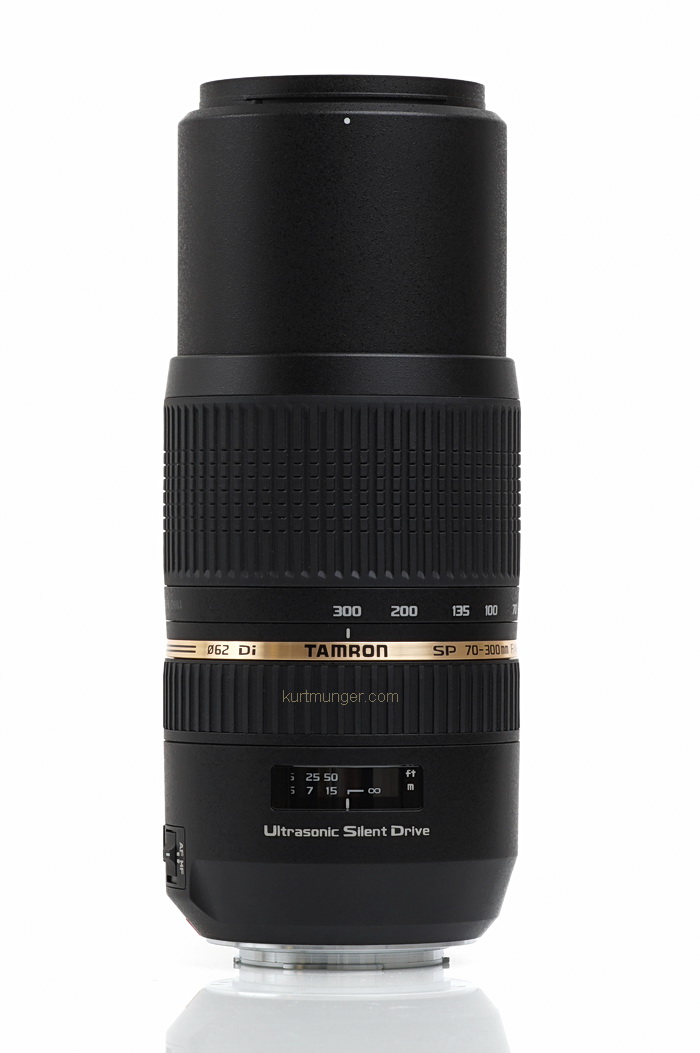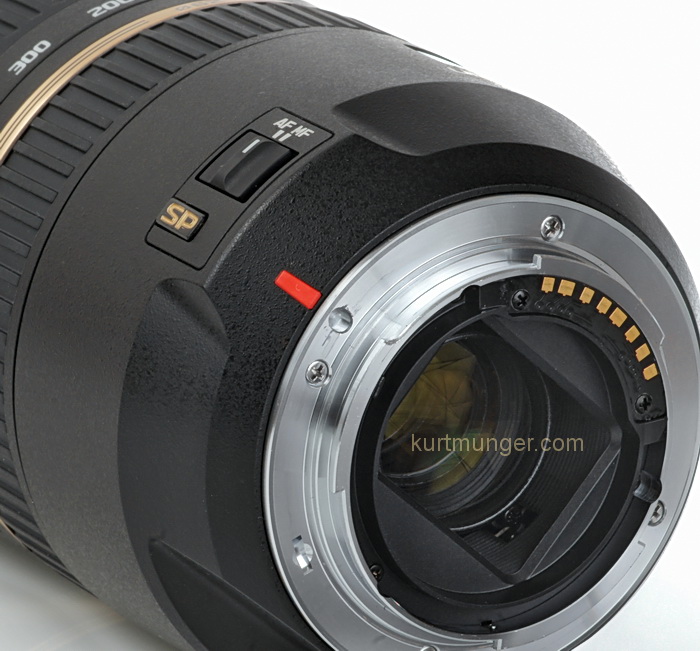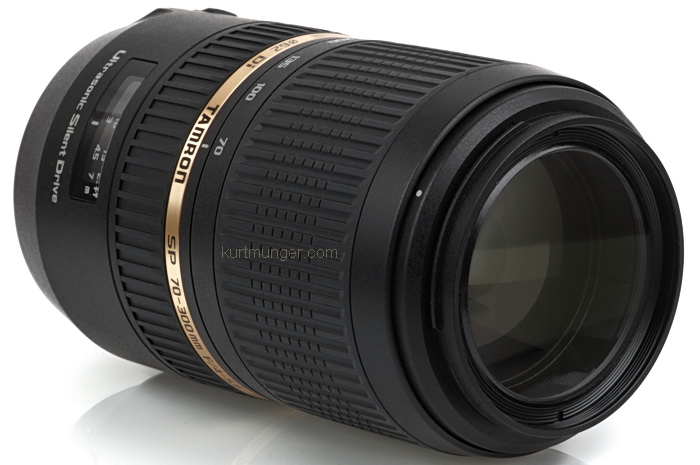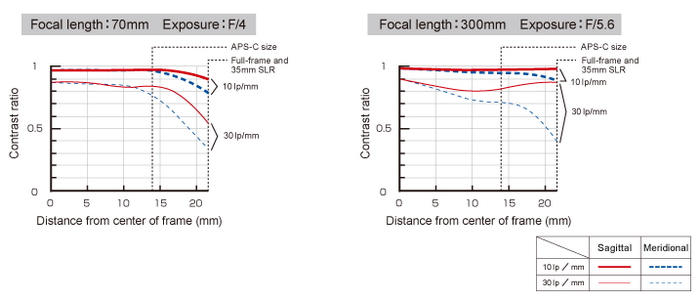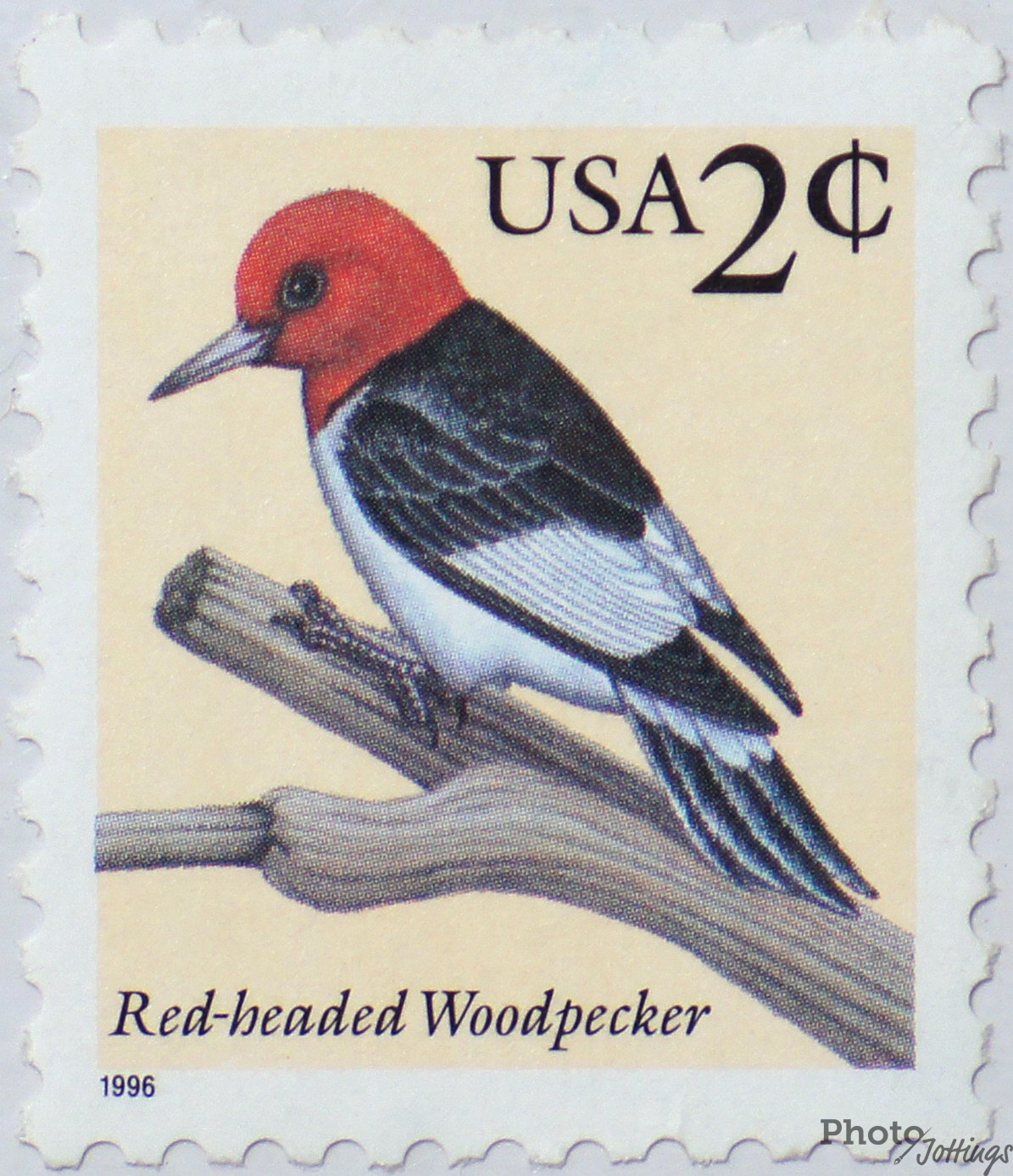|
Full review of the Tamron 70-300mm F/4-5.6 USD lens. The Sony A580 and Sony A900 were used for this review. For a better understanding of terms and methods used in this review, go here.
The usual center, mid-section and corner crops are located at the very bottom of the page.
For a comparison of the Tamron and Sony 70-300mm lenses, go here.
Introduction.
Tamron introduces a “high-end” 70-300mm telephoto zoom lens with features such as their new “USD,” or “ultrasonic silent drive” focusing, and “VC” or “vibration compensation” for Canon and Nikon, but not available in the Sony mount since Sony cameras have sensor-shift image stabilization. This lens is very similar to the Sony 70-300mm F/4.5-5.6 SSM G in both outward appearance and optical quality, and is almost half the price of the Sony. However, Tamron skips the focus limiter switch and focus hold button that Sony includes. You can use the Tamron 70-300mm F/4-5.6 USD on full frame or APS-C cameras. Is the Tamron as good as the Sony “G” version? Keep reading!
The Tamron 70-300mm F/4-5.6 USD has a good build quality, even though it uses mostly plastic on the outside, except the mount, which is metal. Fit and finish are above average, with the finish in typical Tamron speckled black, and matches Sony DSLR camera bodies perfectly. This lens sports a focus distance window, (no DOF scale), a rubber ribbed manual focusing ring at the back, (closest to camera), a rubber ribbed zoom ring at the front with focal length marks at 70mm, 100mm, 135mm, 200mm, and 300mm. Also included is an AF/MF switch on the left side to turn off the USD. Tamron claims the use of two “LD” (low dispersion) elements in the design of the lens; one plain “LD” and one “XLD” or extra-low dispersion element. The lens says “made in China” at the back of the zoom ring.
Zooming is smooth, with proper dampening, and won’t extend out if carried hanging down off your neck. There is no zoom lock. Zooming adds 2.0″ or 51mm to the length of the lens.
EXIF focal length data reads correctly at all zoom marks.
In the box is the lens, front and rear caps, plastic petal type hood, and owner’s manual.
Focusing. This lens has a quiet motor inside to provide focusing, (similar to Sony’s SSM) and doesn’t use the slot-screw type system that’s typical for older lenses from Minolta and Sony. The USD focusing system features instant AF over-ride, meaning if the camera doesn’t focus on what you want, you can re-adjust by turning the focus ring, you don’t have to turn off the AF system. All focusing is done internally, so your polarizer and graduated neutral density filters will stay in the position you originally set them in. The focus ring turns about 160°, which allows precise manual focusing, although that’s tough at longer focal lengths unless using Sony’s live-view focus check. Focusing accuracy is a little disappointing on the Sony A580, but better on the A900, your results may vary depending on your camera and lens calibration settings. Focusing speed is a little slow on the Tamron as compared to Sony’s SSM on the70-300mm G lens.
Requisite product shots.
General information and specifications.
Optical qualities summary.
Lens flare/ghosting. Good control, and about the same as the Sony 70-300mm SSM G. I see some small multi-colored blobs when the sun is in the image at an angle, mostly at the short end.
Light fall-off. Very light on APS-C cameras, moderate amounts on full frame wide open. See samples below.
Color fringing (CA). Lateral color fringing control is above average, and not noticeable unless you look for it. See example farther down the page.
Bokeh. Good at shorter focusing distances, shows rings at longer focusing distances, see examples below.
Color. Seems about the same as Sony lenses.
Close up filter. N/A
Coma. None.
Regular filters cause almost no additional light fall-off.
Filter size. 62mm. Other Sony lenses with this size are: CZ 16-80mm, 16-105mm, 18-200mm, 18-250mm, 24-105mm, and the 70-300mm SSM G.
Distortion. Minor to moderate barrel and pincushion, depending on focal length, see samples below.
Distortion is not a problem when using APS-C cameras. There is a little barrel distortion at 70mm, but zooming to 80mm flattens it out for the most part, then minor pincushion up to about 135mm, where is seems to stay steady all the way to 300mm.
Bokeh samples.
Bokeh looks somewhat smooth at shorter focusing distances, and shorter focal lengths. At longer focusing distances you see a ring around the blurred highlights, especially at the long end. Bokeh is the character of out of focus highlight blur, and not simply how far out of focus the background is. Light fall-off samples.
Light fall-off using APS-C cameras is negligible.
Aperture/focal length guide below.
Tamron 70-300mm F/4-5.6 USD
Sony 70-300mm F/4.5-5.6 G SSM
The Tamron 70-300mm is a third of a stop faster on the short end. Sony drops the aperture faster than the Tamron as you zoom out.
Let’s check out the macro capabilities of this lens.
The sample shot was taken with the Sony A 580 16.2MP camera, so don’t compare it with some others that were taken with the 12.2mp A700. The subject is a standard US stamp, 0.87″x 1.0″ or 22mm x 25mm. Also, note the macro shot was taken as close to the subject as focusing allowed; in this case a very long 49″ (1.24m), measured from the front of the lens barrel to the subject.
I see a very lack-luster close focus shot, exhibiting poor contrast and a general lack of resolution. Fortunately, this performance doesn’t carry over to longer distances! Click for cropped image, 365k. The best shot was at F/8, F/5.6 was noticeably worse. As a side note; the “1996” on the bottom left of the stamp measures a mere 1mm wide.
____________________________________________________________________________________________________
Full frame results using the Sony A900.
Check out the differences when using a full frame camera below. I’m only pointing out the noticeable issues as compared to the APS-C bodies, so if I don’t show it here, the results are not significantly different enough to warrant posting an additional set of images in this section.
Light fall-off
Light fall-off is stronger with full frame coverage. I see a rather abrupt transition of dark corners around 70mm with a wide open aperture. At the long end, the corners are dark at F/5.6, but the transition is smooth from the corners to the middle. Regular filters cause almost no additional light fall-off.
Full image from A900 below illustrating light fall-off.
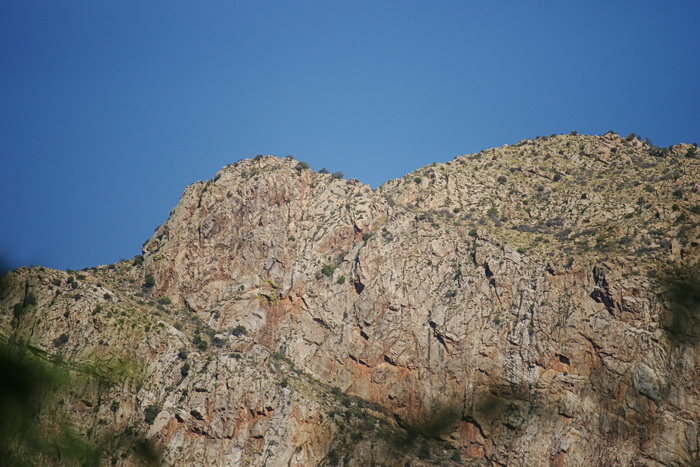
This boring full image shows light fall-off from 300mm, F/5.6. It’s slightly noticeable, but has a pretty smooth transition.
Color fringing.
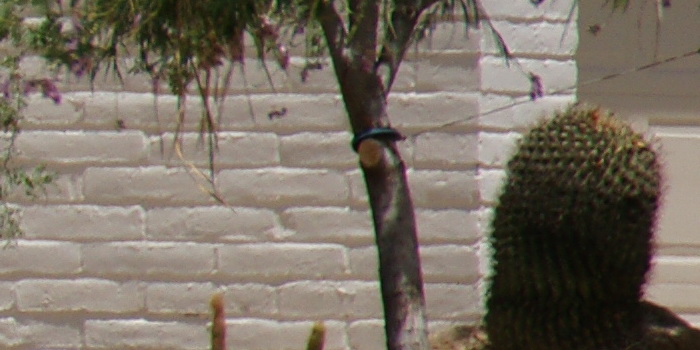
Lateral color fringing is noticeable along the very edges of the image on a full frame camera, but I went out of my way to make it show up this much. This is the strongest color fringing example I could find out of the thousands of shots I took with this lens. Lateral color fringing will not go away by stopping down the aperture. The crop was made using the last 700 pixels from the middle right of the image.
Distortion.
There is minor to moderate barrel distortion at 70mm, although I see a slight “wave” (high in middle, flat on ends) to the signature, and won’t flatten out completely with simple distortion correction tools. Around 80mm distortion becomes flat, but never is completely flat. As you zoom out, pincushion is noticeable at 90-100mm, and by 135mm is about as strong as it gets.
Conclusion.
The Tamron SP 70-300mm F/4-5.6 USD is a welcome addition to the 70/75-300mm category currently offered in the Sony mount. When the Tamron was first announced, along with the price, I thought, oh great, another cheap zoom with a fancy focusing motor; so what’s really different? Well, the difference is, the price of the Tamron is half of the Sony 70-300mm SSM G, with basically the same build and optical qualities. Does paying half the price make it a bargain?
Sony users will want to look carefully at the Tamron 70-300mm F/4-5.6 USD lens, it has great optics with a good build quality, and is similar to the Sony G mentioned above. However, there are a couple of issues that may turn off some potential buyers. My copy did not focus accurately at longer distances with the A580, (but was spot-on at closer distances, and better with the A900), so if this unit passed Tamron quality control, you’ll need to check your shots to make sure they’re focused properly. If you have a camera body featuring AF micro adjustments, you may be able to correct this problem, although Sony doesn’t recommend AF micro adjustments with non-Sony lenses because it may conflict with the Sony lens data entered. My Sony A580 camera and Tamron lens calibration may be on the “outer ends” of a passing grade, so your results may vary. Also, Tamron omitted a focus hold button and focus limiter switch, both can come in handy for speeding up focusing in difficult situations; Sony includes both of those features. One other minor negative is the lack of close focus sharpness, check out the stamp shot, it’s not that great, but you probably wouldn’t notice it in real life.
On the bright side, I found overall image quality very good; again, about the same as the Sony version, but Tamron has noticeably better control of lateral color fringing (along the sides of the image). The Tamron is also a third stop faster at the short end, but that’s not a big deal.
I guess the bottom line is; if you have the money, I’d get the Sony 70-300mm SSM G, if you’re on a budget and simply want the best image quality for the price, then consider the Tamron 70-300mm F/4-5.6 USD.
|
|
Sample crops from the centers, mid-sections and corners.
Before viewing the crops please read: I used a slightly different part of the stamp scene for each focal length to make it clear each focal length should stand on it’s own, because there was no attempt to capture the exact same coverage at different distances, so do not compare crops across different focal lengths.
An indoor, controlled environment was selected (along with the stamp subject) to avoid heat shimmer and other image destroying conditions you typically get with telephoto lenses outside in the Summer, especially here in southern Arizona. Shooting indoors eliminates those problems, but forces me to use shorter focusing distances. Fortunately, the distances used (and listed below) are in the bird or small animal range, so it makes the cropped images more useful as opposed to very close focus test chart type shots.
The Sony A900 was used for this comparison. The full frame mid-section crops below were taken from the same position as where the APS-C corners would be.
70mm.
The 70mm centers look sharp at all focal lengths. The mid-sections sharpen up nicely at F/5.6, the corners at F/8. Distance from camera to subject is about 12′ (3.6m).
135mm.
At 135mm, the centers are pretty sharp at all apertures, but the mid-sections and corners are somewhat soft unless stopped down to F/8. Distance from camera to subject is about 19′ (5.8m).
300mm.
|



